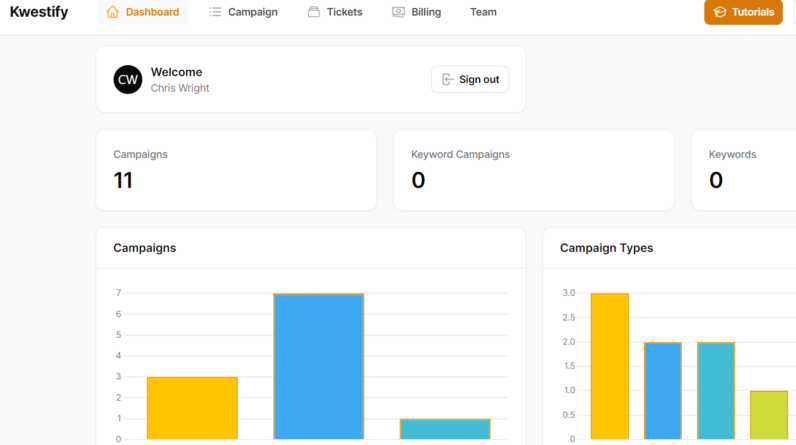
Affiliate marketing is a rapidly growing industry that allows individuals to earn money by promoting products and services of other companies. But have you ever wondered what the typical commission structure in affiliate marketing is? Well, in simple terms, it refers to the percentage or fixed amount that an affiliate receives for each successful referral or sale. This commission structure varies widely depending on the companies and the products being promoted. So, if you’re curious to know more about how affiliates earn their income in the vast world of affiliate marketing, keep reading!
Understanding Affiliate Marketing
Affiliate marketing is a popular and effective way for individuals or companies to earn money online by promoting and selling products or services on behalf of others. This marketing strategy allows affiliates to earn a commission for every sale, action, or click that is generated through their promotional efforts.
Definition of Affiliate Marketing
Affiliate marketing is a performance-based marketing model where affiliates earn a commission for promoting and selling products or services on behalf of merchants. Affiliates are essentially online marketers who leverage their own platforms, such as websites, blogs, or social media, to drive traffic and sales to the merchant’s website. In return, affiliates receive a predetermined commission for each successful referral.
How Affiliate Marketing Works
The process of affiliate marketing involves three key parties: the affiliate, the merchant, and the customer. First, the affiliate joins an affiliate program or network and selects products or services they want to promote. Next, the affiliate creates unique affiliate links, which contain their unique ID, to track their referrals. These links are then placed on the affiliate’s platforms, such as their website or social media channels.
When a customer clicks on the affiliate’s link and makes a purchase or completes a specified action on the merchant’s website, the affiliate’s unique ID is recorded and the commission is attributed to them. The affiliate program or network tracks the referrals and calculates the commission owed to the affiliate. Payments are typically made on a regular basis, such as monthly, via various payment methods.
Commission Structures in Affiliate Marketing
Commission structures in affiliate marketing vary depending on the specific affiliate program or network. Here are some common commission structures that affiliates may encounter:
Cost Per Sale (CPS)
Cost Per Sale is one of the most popular commission structures in affiliate marketing. Affiliates earn a commission for every sale they refer to the merchant. The commission can be a percentage of the sale amount or a flat-rate commission.
Cost Per Action (CPA)
Cost Per Action is another common commission structure where affiliates are paid for specific actions, such as filling out a form, signing up for a free trial, or downloading an app. The commission can be percentage-based or a flat-rate commission.
Cost Per Click (CPC)
Cost Per Click is a commission structure where affiliates earn a commission for every click they generate on their affiliate links. The commission is typically a predetermined amount per click.
Revenue Sharing
Revenue Sharing is a commission structure where affiliates earn a percentage of the revenue generated from their referrals. This can be a recurring commission for as long as the referred customer continues to generate revenue for the merchant.
Tiered Commission Structures
Some affiliate programs offer tiered commission structures where affiliates can earn higher commission rates based on their performance or sales volume. These structures provide an incentive for affiliates to continuously improve and increase their referrals.
Performance-Based Bonuses
In addition to the standard commission structures, some affiliate programs offer performance-based bonuses as extra incentives for affiliates who achieve specific goals or milestones. These bonuses can be cash rewards, increased commission rates, or other valuable rewards.
Cost Per Sale (CPS)
Definition
Cost Per Sale (CPS) is a commission structure in affiliate marketing where affiliates earn a commission for every sale they generate for the merchant. This commission structure is a common and straightforward way for affiliates to earn money.
Percentage-Based Commission
In a CPS program, affiliates can earn a percentage-based commission on the total sale amount. For example, if the affiliate program offers a 10% commission and the affiliate generates a sale worth $100, they would earn $10 as their commission.
Flat-Rate Commission
Alternatively, some CPS programs offer a flat-rate commission for each sale. This means that regardless of the sale amount, the affiliate will earn a fixed commission. For instance, if the flat-rate commission is $20, the affiliate would earn $20 for every sale they generate, regardless of whether the sale is worth $50 or $500.
Examples of CPS Programs
There are numerous affiliate programs that utilize the CPS commission structure. Popular e-commerce platforms such as Amazon Associates, which allows affiliates to promote and earn commissions on a wide variety of products, commonly offer CPS programs. Other CPS programs can be found in industries such as fashion, electronics, and health and wellness.
Cost Per Action (CPA)
Definition
Cost Per Action (CPA) is a commission structure in affiliate marketing where affiliates are paid for specific actions they generate, rather than for actual sales. This commission structure provides flexibility for affiliates as they can earn money without solely relying on generating sales.
Types of Actions
The specific actions that affiliates can earn commissions on can vary depending on the affiliate program or network. Common actions in CPA programs include filling out a form, signing up for a free trial, subscribing to a newsletter, or downloading an app.
Percentage-Based Commission
In a CPA program, affiliates may earn a percentage-based commission on the value of the action. For example, if the affiliate program offers a 20% commission and the action is worth $10, the affiliate would earn $2 as their commission.
Flat-Rate Commission
Alternatively, some CPA programs offer a fixed flat-rate commission for each action generated. This means that regardless of the value of the action, the affiliate will earn a predetermined amount. For instance, if the flat-rate commission is $5, the affiliate would earn $5 for every action they generate, whether it is worth $10 or $100.
Examples of CPA Programs
CPA programs can be found in various industries, including finance, gaming, software, and online services. For instance, some financial companies may offer CPA programs where affiliates earn commissions for every successful credit card application or loan referral. Gaming companies may have CPA programs where affiliates earn commissions for every new player registration.
Cost Per Click (CPC)
Definition
Cost Per Click (CPC) is a commission structure in affiliate marketing where affiliates earn a commission for every click generated on their affiliate links, regardless of whether a sale or action is generated. This commission structure can be an attractive option for affiliates who specialize in driving high volumes of click-throughs.
Commission Per Click
In a CPC program, affiliates are typically paid a predetermined commission for each click their affiliate links receive. The commission per click can vary depending on the specific affiliate program or network. For example, if the commission per click is $0.10 and the affiliate generates 100 clicks, they would earn $10 as their commission.
Examples of CPC Programs
CPC programs can be commonly found in industries such as online advertising and pay-per-click (PPC) campaigns. Some affiliate programs are specifically dedicated to CPC models, where affiliates create and promote advertisements or banners containing their affiliate links. These programs often provide detailed reporting and analytics to ensure affiliates have visibility into the performance of their clicks and commissions earned.
Revenue Sharing
Definition
Revenue Sharing is a commission structure in affiliate marketing where affiliates earn a percentage of the revenue generated from their referrals. Unlike other commission structures that focus on specific actions or clicks, revenue sharing allows affiliates to earn recurring commissions as long as their referrals continue to generate revenue for the merchant.
Percentage-Based Commission
In a revenue-sharing program, affiliates earn a percentage-based commission on the revenue generated by their referrals. The specific commission percentage can vary depending on the affiliate program or network. For example, if the affiliate program offers a 20% commission and the referred customer generates $100 in revenue, the affiliate would earn $20 as their commission.
Examples of Revenue Sharing Programs
Revenue sharing programs are commonly found in industries such as subscription-based services, membership sites, and online platforms. For example, some software companies offer revenue sharing programs where affiliates earn recurring monthly commissions for as long as their referred customers remain subscribed to the software service. Similarly, some online learning platforms have revenue sharing programs where affiliates earn a percentage of the course fees paid by their referrals.
Tiered Commission Structures
Definition
Tiered commission structures are a form of commission structure in affiliate marketing where affiliates can earn higher commission rates based on their performance or sales volume. These structures provide an incentive for affiliates to continuously improve and increase their referrals.
Different Commission Tiers
In a tiered commission structure, affiliates start at a base commission rate, and as they achieve specific performance targets, they can progress to higher commission tiers with increased commission rates. The specific commission tiers and rates can vary depending on the affiliate program or network.
Requirements for Advancement
To advance to higher commission tiers in a tiered commission structure, affiliates typically need to meet certain requirements. These requirements can include achieving a certain number of sales, generating a minimum revenue, or surpassing specific performance benchmarks. The specific requirements can vary depending on the affiliate program or network.
Advantages and Disadvantages
Tiered commission structures can provide several advantages for affiliates. Firstly, they offer the potential to earn higher commission rates as affiliates improve their performance. This can motivate affiliates to continuously strive for better results. Additionally, tiered commission structures can create a sense of progression and achievement for affiliates, leading to increased engagement and dedication. However, tiered commission structures may also have disadvantages, such as increased pressure to meet performance targets and potentially limited earning potential for affiliates who are unable to advance to higher tiers.
Performance-Based Bonuses
Definition
Performance-based bonuses are additional incentives offered by some affiliate programs to reward affiliates who achieve specific goals or milestones. These bonuses can supplement the standard commission structures and provide additional motivation for affiliates to excel in their promotional efforts.
Criteria for Eligibility
The criteria for eligibility for performance-based bonuses can vary depending on the affiliate program or network. Some common criteria may include reaching a certain sales volume, surpassing revenue targets, consistently meeting or exceeding performance benchmarks, or demonstrating exceptional marketing strategies.
Bonus Structure
The structure of performance-based bonuses can also vary. Some bonuses may be awarded as cash rewards, while others may come in the form of increased commission rates or valuable perks. The specific bonus structure and rewards offered can depend on the affiliate program or network.
Examples of Performance-Based Bonus Programs
Many affiliate programs offer performance-based bonuses to their affiliates as a way to encourage and reward exceptional performance. These bonuses can range from cash rewards for achieving certain sales targets to luxury vacations for top-performing affiliates. Additionally, some affiliate programs may offer special incentives for affiliates who consistently deliver high-quality traffic or generate a significant number of new customers.
Factors Affecting Commission Structures
Several factors can influence the commission structures offered by affiliate programs. These factors play a role in determining the commission rates, types of actions or sales eligible for commission, and overall earning potential for affiliates. Here are some key factors that can affect commission structures:
Product or Service
The nature of the product or service being promoted can impact the commission structure. Higher-priced products or services may offer higher commission rates, as the potential revenue generated from each sale is greater. Additionally, some industries may have higher profit margins, allowing for more generous commission rates.
Industry
Different industries can have varying commission structures based on market competitiveness, consumer demand, and the perceived value of products or services. Highly competitive industries may offer higher commission rates to attract affiliates, while more niche industries may have lower commission rates due to lower demand.
Merchant’s Profit Margin
The profit margin of the merchant selling the product or service can also impact the commission structure. Merchants with higher profit margins may be able to offer more generous commission rates to affiliates. Conversely, merchants with lower profit margins may have limited resources to allocate for affiliate commissions.
Affiliate Network
If affiliates are part of an affiliate network, the network itself can influence the commission structures available. Some affiliate networks may negotiate higher commission rates with merchants, offer additional incentives, or provide access to exclusive affiliate programs.
Affiliate’s Performance
An affiliate’s own performance and track record can also influence the commission structure they are offered. Affiliates who consistently generate high-quality traffic, drive significant sales or actions, and maintain a positive reputation may be able to negotiate higher commission rates or gain access to exclusive commission structures.
Conclusion
Understanding the various commission structures in affiliate marketing is essential for affiliates to maximize their earning potential. By familiarizing themselves with the different types of commissions, such as CPS, CPA, CPC, revenue sharing, and tiered structures, affiliates can choose programs that align with their interests and marketing strategies. Additionally, taking into account factors like the product or service being promoted, the industry, the merchant’s profit margin, the affiliate network, and their own performance can help affiliates evaluate the earning potential and opportunities offered by different commission structures. By leveraging these insights, affiliates can make informed decisions and create successful affiliate marketing campaigns that generate significant revenue.






